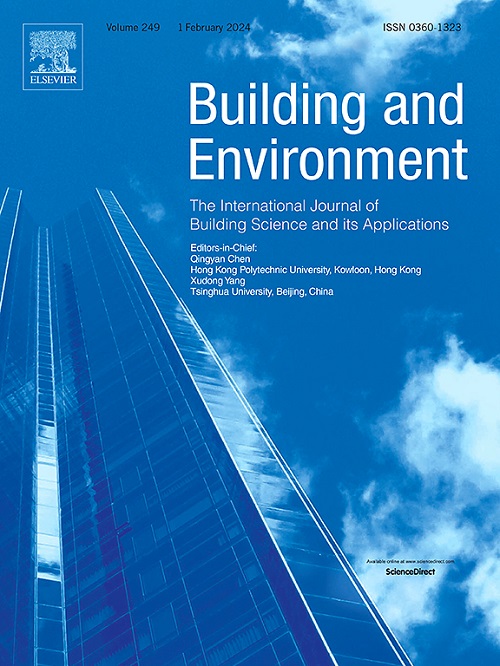Machine learning-based surrogate models for fast impact assessment of a new building on urban local microclimate at design stage
IF 7.1
1区 工程技术
Q1 CONSTRUCTION & BUILDING TECHNOLOGY
引用次数: 0
Abstract
The rapid urbanization introduces changes in the local urban microclimate. Many efforts have been paid on the impact assessment of building design on local microclimate. However, there is still a lack of efficient and accurate prediction method for assessing the impacts on local microclimate when making the design of individual buildings. Two complementary machine learning-based surrogate models are proposed, including an SVR-based local air temperature model and a LightGBM-based local wind velocity model. They are identified by evaluating and comparing eight alternative machine learning models, four for each model development. 200 sets of CFD simulation data corresponding to different building designs are used for the model training and validation. The results show that the developed surrogate models can dramatically reduce computation time (from over 5 h to less than a second for a single prediction) while keeping the same order of accuracy of CFD simulations for local microclimate prediction of individual buildings. It therefore facilitates the fast, comprehensive and accurate prediction of the impacts on the local microclimate at the early design stage of new construction and renovation of individual buildings, for designers to deliver preferred local microclimate and/or avoid unacceptable microclimate changes.
基于机器学习的代用模型,用于在设计阶段快速评估新建筑对城市局部小气候的影响
快速城市化带来了当地城市小气候的变化。人们在评估建筑设计对当地小气候的影响方面做了很多努力。然而,在评估单个建筑设计对当地小气候的影响时,仍然缺乏高效、准确的预测方法。本文提出了两种基于机器学习的互补代用模型,包括基于 SVR 的局部气温模型和基于 LightGBM 的局部风速模型。通过评估和比较八个可供选择的机器学习模型(每个模型开发四个),确定了这两个模型。模型的训练和验证使用了 200 组不同建筑设计的 CFD 模拟数据。结果表明,所开发的代用模型可显著缩短计算时间(单次预测时间从 5 小时以上缩短到 1 秒以内),同时保持与单个建筑物局部微气候预测 CFD 模拟相同的精度等级。因此,它有助于在新建建筑和单体建筑翻新的早期设计阶段快速、全面、准确地预测对当地微气候的影响,以便设计师提供理想的当地微气候和/或避免不可接受的微气候变化。
本文章由计算机程序翻译,如有差异,请以英文原文为准。
求助全文
约1分钟内获得全文
求助全文
来源期刊

Building and Environment
工程技术-工程:环境
CiteScore
12.50
自引率
23.00%
发文量
1130
审稿时长
27 days
期刊介绍:
Building and Environment, an international journal, is dedicated to publishing original research papers, comprehensive review articles, editorials, and short communications in the fields of building science, urban physics, and human interaction with the indoor and outdoor built environment. The journal emphasizes innovative technologies and knowledge verified through measurement and analysis. It covers environmental performance across various spatial scales, from cities and communities to buildings and systems, fostering collaborative, multi-disciplinary research with broader significance.
 求助内容:
求助内容: 应助结果提醒方式:
应助结果提醒方式:


